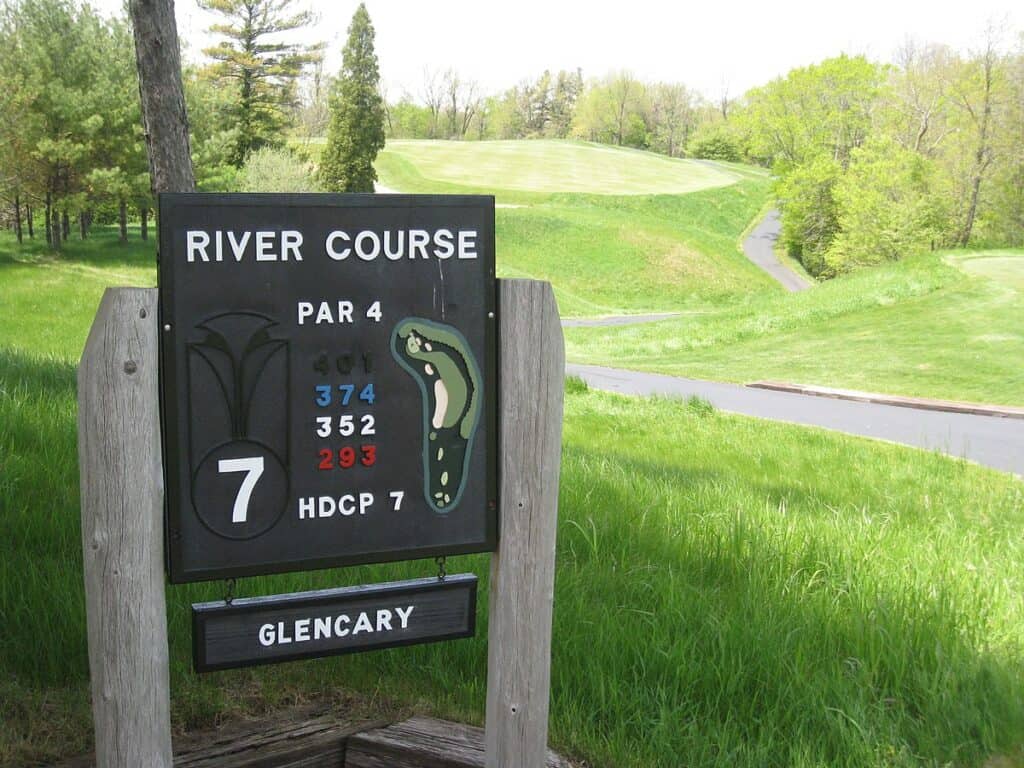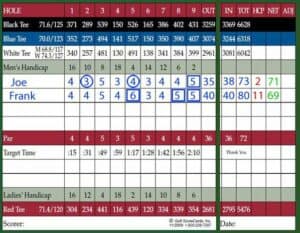- Updated: December 14, 2022
What Is A Double Bogey in Golf?
A double bogey in golf is two (2) shots over par.
For example, if a hole is a par 4, a double bogey means that it took the player six shots to get the golf ball in the hole.
Oftentimes a double bogey will be referred to simply as “a double.”
The term can also be turned into a verb. For example, you could say a player double bogeyed or doubled a hole when they took two shots more than par to complete it.


Another way to show a double bogey is “+2”, but this is only for a single hole. If watching golf on TV and a player’s score is shown as +2 on the screen, that is most likely their aggregate score in relation to par for the entire event to that point.
Golf can be a very difficult game, and even professional golfers will find themselves taking a double bogey from time to time.
What is Par
Par is the baseline for all scoring terms for both a single hole and an entire round of golf. Par is the established number of shots that a player is expected to be able to complete a hole in. The most common formula for establishing par is taking the number of shots it should take most golfers to reach the putting green, then adding two more shots for the expected number of putts. These determinations are done by the golf course and displayed on the scorecard and usually on signage near the teeing area of each hole.
Commonly there are three types of holes: Par 3s, Par 4s, and Par 5s. A double bogey on a Par 3 would be a score of five. A double bogey on a Par 4 would be a score of six. Finally, a double bogey on a Par 5 would be a score of seven.

Net and Gross Scores

Golf has a handicap scoring system that allows players of different skill levels to compete fairly against each other. Based on past scores, a player might be able to take strokes off their actual score when compared to an opponent’s score. If a player’s handicap allows them to subtract strokes on a given hole, they would have a net score and a gross score for that hole.
For example, a player played a par 5 hole that they “got a stroke on” due to their handicap, and they finished the hole in eight shots. Their gross score on the hole would be an eight or triple bogey, but with their handicap, they would have a net double bogey.
Other Relevant Scoring Terms
Several other scoring terms refer to the player’s score in relation to par. Bogey is the most common term, as along with the double bogey, there is a bogey – one stroke over par; a triple bogey – three strokes over par; and a quadruple bogey – four strokes over par. These are the scores that most recreational golfers, unfortunately, find on their scorecards too often.
The more desirable scoring terms, along with par, include birdie and eagle. A birdie is when a player completes a hole in one less shot than par. An eagle, one of the rarer scores a player will attain, is completing a hole in two strokes less than par.
If you made a double bogey on the first hole and an eagle on the second hole, your cumulative score through two holes would be even par.
About The Author
Writers of Independent Golf Reviews
Independent Golf Reviews has tested and reviewed 1000+ golf products over the past 10 years. We use our experience and expertise to give golfers an unbiased insight on the market.
Read more…
Share
Receive the best golf discounts available exclusively for our subscribers and be auto entered into our monthly golf giveaways!
Success!⛳️
You are now an official member of IGR. Keep an eye out for the perks.
No spam, ever. 🔒

